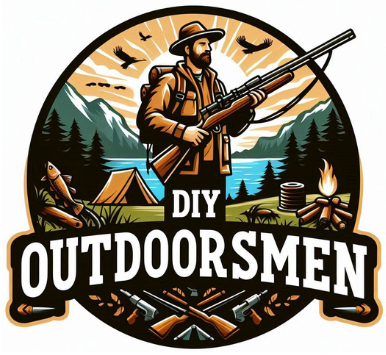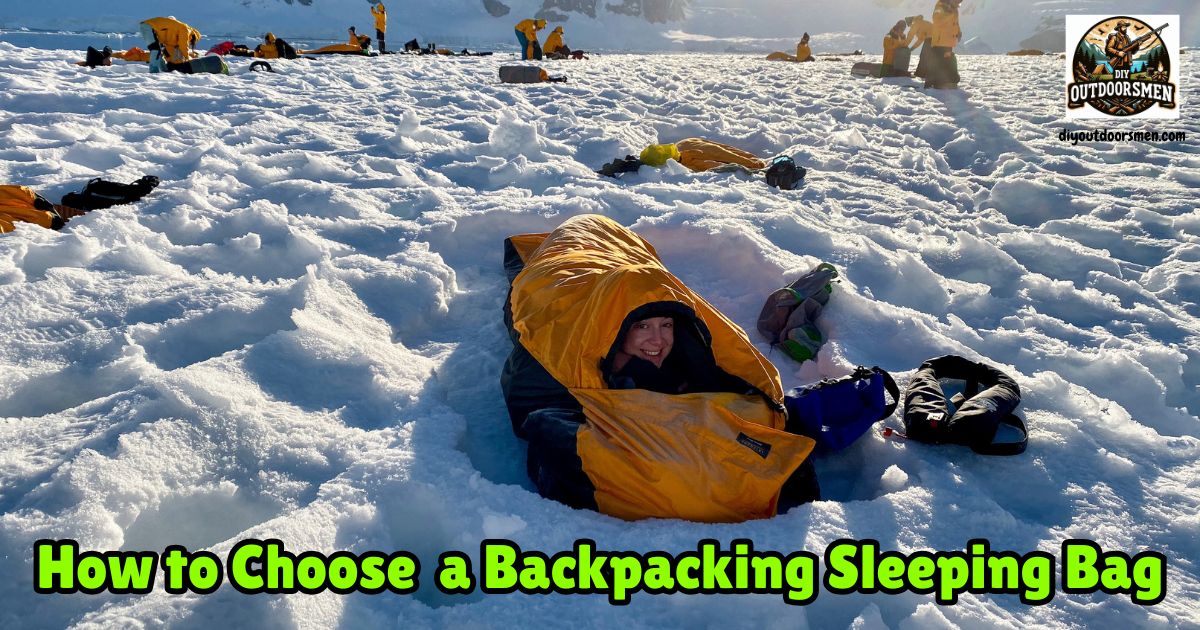Contents
- 1 Key Features When Choosing a Backpacking Sleeping Bag
- 2 Temperature Ratings Explained
- 3 Insulation: Down vs. Synthetic
- 4 Weight and Packability
- 5 Shape and Fit: Mummy, Rectangular, and Hybrid
- 6 Top Backpacking Sleeping Bags
- 7 Features That Boost Comfort and Convenience
- 8 Other Factors: Durability, Price, and Liners
- 9 Frequently Asked Questions About Backpacking Sleeping Bags
- 10 Choosing the Right Backpacking Sleeping Bag Makes a Difference
Finding a sleeping bag that fits your backpacking needs can have a big effect on how much you enjoy your nights outside. I remember my early trips, shivering through cold nights or fighting with bulky gear that wouldn’t fit in my bag. After a few seasons, I learned the value of paying attention to every feature. A solid backpacking sleeping bag offers warmth, comfort, and reliability, all while being light enough for long hikes.
QUICK LOOK: Key Considerations in a Backpacking Sleeping Bag
- Temperature Rating: Sleeping bags often list a “comfort” and a “limit” rating. The comfort rating is designed with cold sleepers in mind, while the limit rating applies to those who run warm.
- Insulation: Down and synthetic fills both have advantages, and my choice depends on the trip. Down insulation, made from goose or duck down and feathers, is famous for being very light and easy to compress. Synthetic insulation uses polyester fibers that still trap heat even when damp, and they usually cost less.
- Weight and Packability: Lightweight sleeping bags can weigh less than two pounds, and their packed size is small enough to not take up all the room in my backpack. I pay attention to both the stated weight and the packed volume. Down bags almost always win here, but high-end synthetic bags are catching up.
- Shape and Fit: The shape of my sleeping bag affects both warmth and comfort. Mummy bags are narrow at the feet and shoulders, with a fitted hood to keep in warmth. They are the best choice for colder trips and help cut down on extra space that my body would have to heat.
Key Features When Choosing a Backpacking Sleeping Bag
Shopping for a sleeping bag can feel complicated with all the terms and specs. I like to focus on the basics first, making sure the bag matches the places and weather I expect to face. Key features to look at include temperature rating, insulation material, weight, packed size, shape, and extra details like hoods or zipper quality.
Getting the right mix means I can trust my gear at night and save energy during the day. Backpacking sleeping bags are designed to be lighter and more compact than car camping bags. Saving ounces here and there adds up when hiking all day.
A 2023 report from the outdoor gear industry showed that ultralight sleeping bags are some of the fastest-growing products as more people try thru-hiking and long backpacking routes. Lightweight gear that doesn’t sacrifice warmth is especially popular with experienced hikers (source: OutdoorGearLab).
Temperature Ratings Explained
The temperature rating is usually the first number I check. It tells me how cold I can expect to be comfortable in that bag. Sleeping bags often list a “comfort” and a “limit” rating. The comfort rating is designed with cold sleepers in mind, while the limit rating applies to those who run warm. I always plan for the lowest temps I might face, then add a little buffer, just in case the weather changes or I feel colder one night.
For most three-season backpacking, bags rated around 20°F (-6°C) keep me comfortable. If I’m planning an alpine or shoulder season trip, I might choose a warmer bag. Everyone sleeps differently, so if you’re a cold sleeper, staying on the safe side with a bag rated a few degrees warmer is usually worth the extra weight.
- Comfort rating: Temperature, most people remain comfortable without extra layers.
- Limit rating: The Lowest temperature an average sleeper can go without waking up from the cold.
- Extreme rating: The lowest temperature for survival, not actual comfort.
I find that temperature ratings can differ a bit between brands, but looking for bags tested under the EN/ISO standard gives me more confidence in their ratings (source: REI Co-op).
Insulation: Down vs. Synthetic
Sleeping bags stay warm thanks to their insulation. Down and synthetic fills both have advantages, and my choice depends on the trip. Down insulation, made from goose or duck feathers, is famous for being very light and easy to compress. Synthetic insulation uses polyester fibers that still trap heat even when damp, and they usually cost less.
- Down insulation: Lighter, packs smaller, and feels warmer for the weight. It’s what I grab when every ounce counts, but I’m careful about keeping it dry. Manufacturers sometimes coat down to help it repel water, but I still take precautions in wet environments.
- Synthetic insulation: Slightly heavier and bulkier, but dries fast and keeps me warm if it gets wet. I like synthetic bags for budget trips, wet climates, or if I expect rough conditions.
For most backpacking trips where I want to save space and pack less weight, I use a treated down bag with a water-resistant shell. For trips that might include a lot of moisture, I consider a newer synthetic bag, even if it means carrying a few extra ounces.
Weight and Packability
As someone who spends hours hiking, I feel every pound on my back. Lightweight sleeping bags can weigh less than two pounds, and their packed size is small enough to not take up all the room in my backpack. I pay attention to both the stated weight and the packed volume. Down bags almost always win here, but high-end synthetic bags are catching up.
I always make sure the packed bag fits horizontally or vertically in my pack; nothing is more frustrating than a sleeping bag that bulges out or won’t squeeze down enough. Compression sacks can help, but I’m careful not to over-compress and damage the insulation.
- Ultralight bags: Weigh under 2 pounds (0.9 kg), ideal for thru-hiking.
- Standard backpacking bags usually weigh 2 to 3 pounds (0.9 to 1.4 kg).
Over the years, I have tried different ways of packing my sleeping bag. Sometimes, instead of using separate stuff sacks, I let my sleeping bag fill up empty spaces in my pack, which can make gear organization easier and free up precious room for other equipment. Everyone develops their own system with time, so experiment to see what works best for you.
Shape and Fit: Mummy, Rectangular, and Hybrid
The shape of my sleeping bag affects both warmth and comfort. Mummy bags are narrow at the feet and shoulders, with a fitted hood to keep in warmth. They are the best choice for colder trips and help cut down on extra space that my body would have to heat. I sometimes go for a slightly wider “relaxed mummy” or a “spoon” shaped bag if I know I’ll be tossing and turning.
Rectangular bags, meanwhile, feel roomy but don’t trap heat as efficiently. I keep these for short summer hikes when comfort is more important than warmth or weight. Some brands now offer hybrid shapes or women-specific bags with added insulation in the feet and chest.
- Mummy: Light, warm, and space-saving. My pick for most conditions.
- Rectangular: More room to move. Great for car camping or short, warm trips.
- Hybrid/spoon: A compromise with extra room in the knees and shoulders.
Make sure the sleeping bag you pick gives you enough room to shift around and is long enough for your height. Nothing is worse than having your feet pressed up against the bottom of the bag, making you cold. Trying out different shapes, either at a gear store or by borrowing from friends, can help you find the best fit for your sleep style.
Top Backpacking Sleeping Bags
A good sleeping bag is your ticket to warmth and rest after a long day on the trail. Here’s a beginner-friendly lineup that balances comfort, weight, and value:
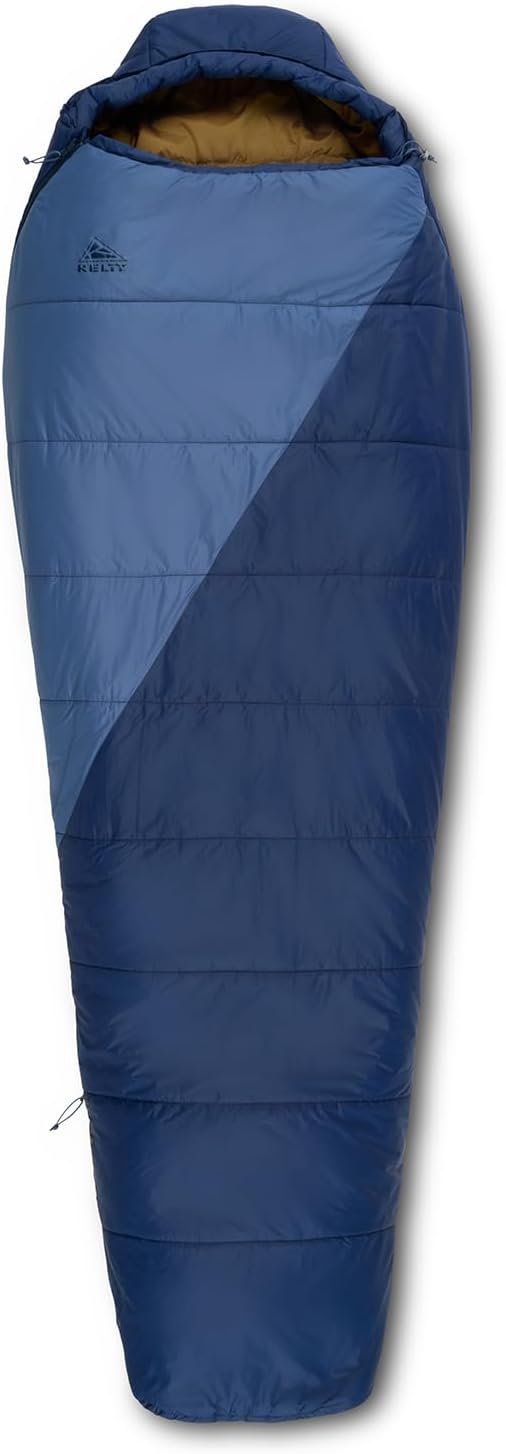
Kelty Cosmic Synthetic Fill
A solid entry-level synthetic bag with a roomy fit and a 20°F rating—great for 3-season use.

Marmot Trestles Elite Eco 30
Eco-conscious and budget-friendly, this synthetic mummy bag offers warmth and compressibility without breaking the bank.
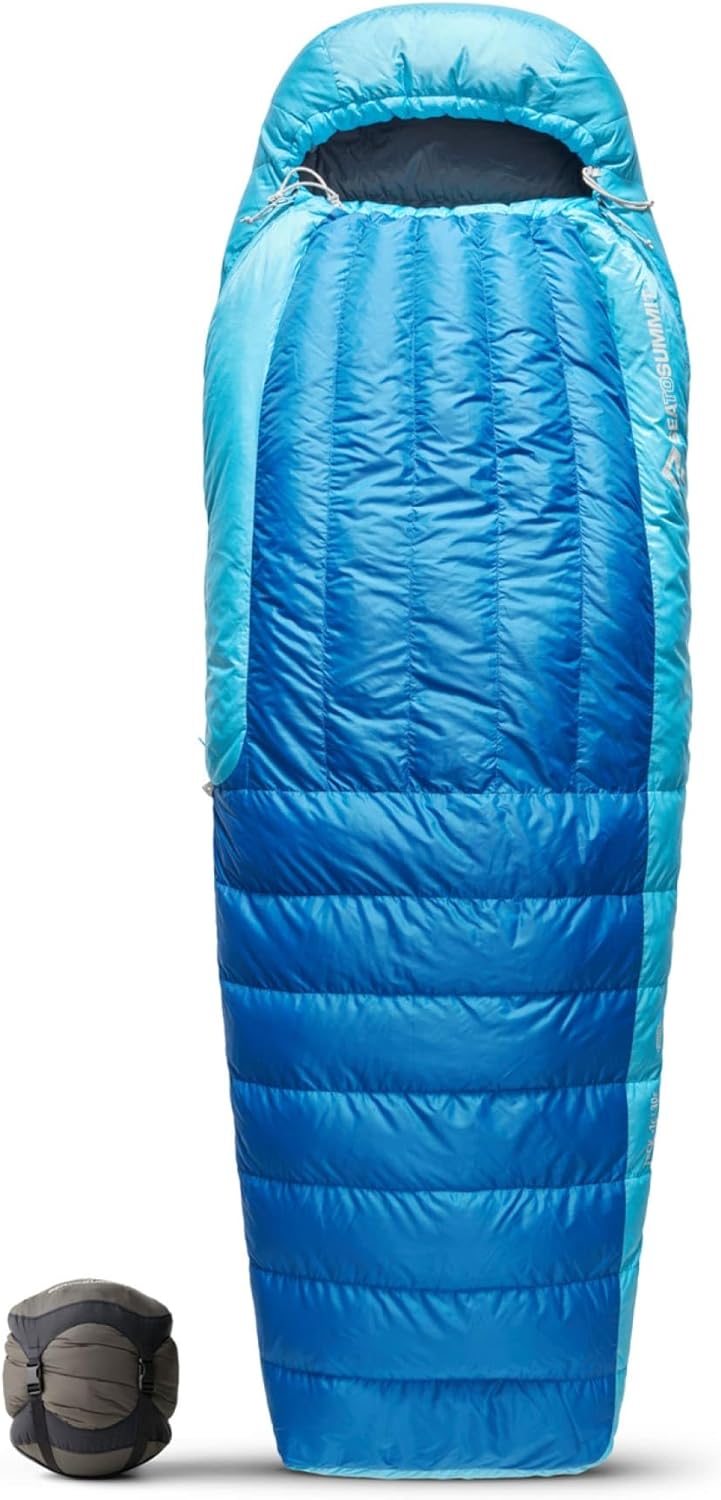
Sea to Summit Trek TKII
A versatile semi-rectangular bag with down insulation—ideal if you want a bit more wiggle room and warmth.

TETON Sports LEEF Ultralight Mummy Bag
Lightweight, compact, and rated for colder nights. A great pick if you’re venturing into chillier climates.
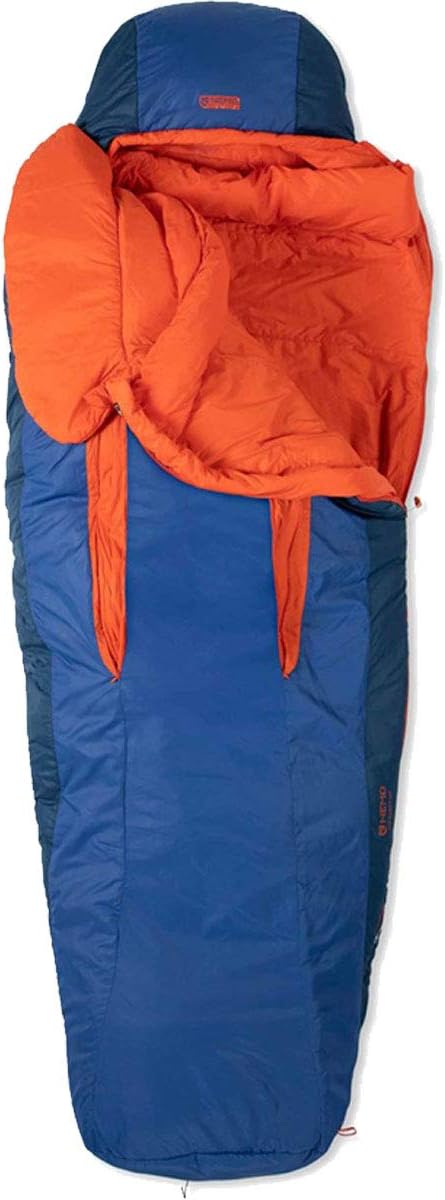
NEMO Forte 35
Known for its spoon shape, this bag gives side sleepers extra comfort and space. Synthetic fill makes it easy to care for.
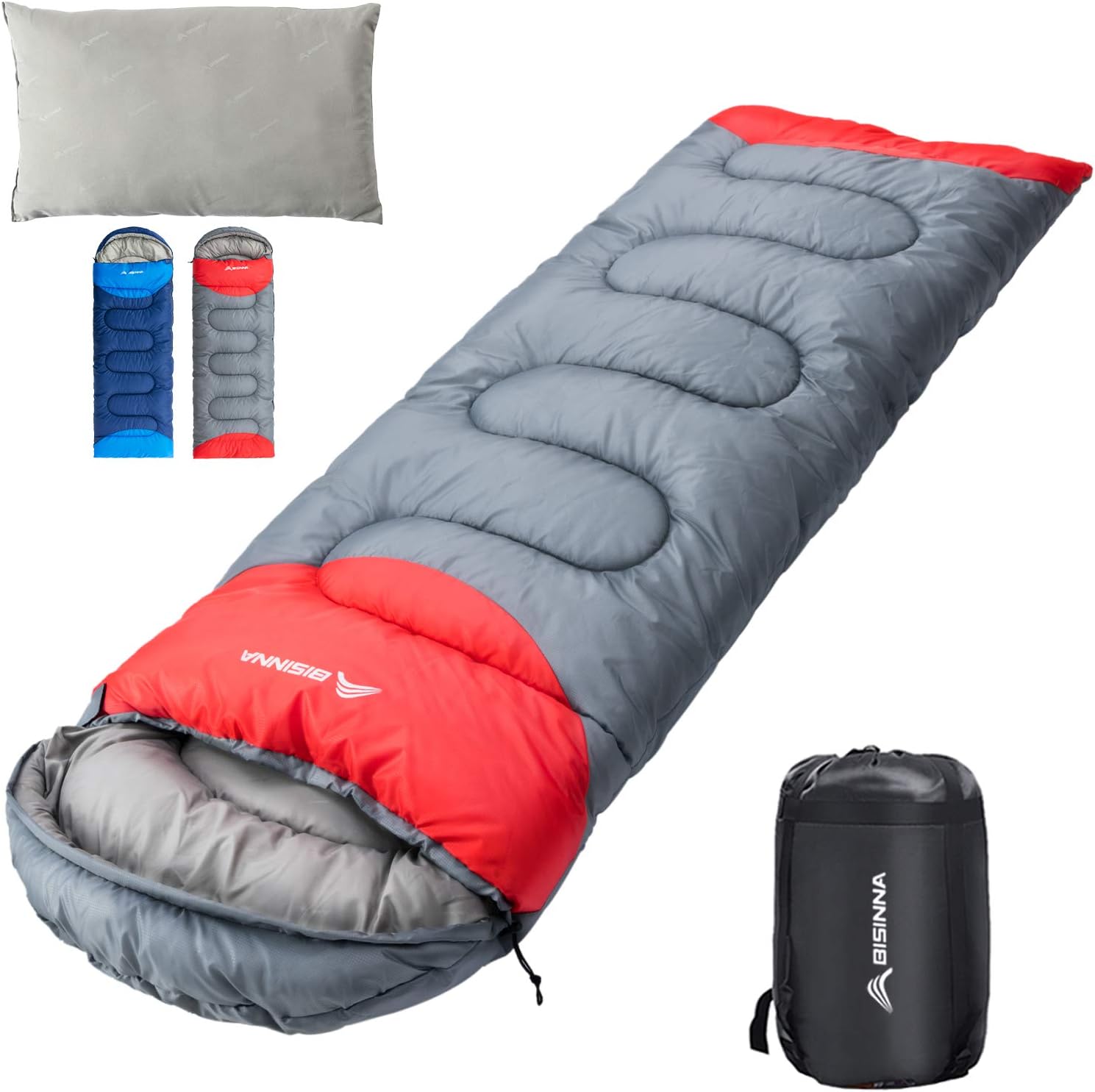
BISINNA 4-Season Sleeping Bag
Budget-friendly and cozy, with a 32°F rating and a built-in pillow. Great for casual trips or car-to-camp setups.
Features That Boost Comfort and Convenience
Some smaller details on a sleeping bag can end up making a big difference. I look for a hood that cinches down around my head, since a lot of body heat is lost there. Draft collars around the neck and zipper keep warm air in and cold air out. Zippers are another detail I check; nothing’s worse than snagging the bag in the middle of the night. A two-way or anti-snag zipper is a huge plus.
Sometimes, bags include small internal pockets for stashing a phone or headlamp. These little touches help me stay organized when I don’t want to search through my pack in the dark. A stash pocket is handy for those things I might want during the night.
Pairing with a Sleeping Pad
I learned the hard way that even the best sleeping bag won’t keep me warm on its own. A sleeping pad underneath insulates me from the cold ground, and it adds a lot to overall comfort. Sleeping pads come with their warmth rating (R-value), and matching the right pad with my bag improves my sleep quality. On really cold nights, using a pad with a higher R-value keeps the chill from seeping in and also makes my bag’s rating more accurate.
Some bags even have sleeves or straps to attach to a specific sleeping pad, so I don’t roll off in the night.
Other Factors: Durability, Price, and Liners
Backpacking gear isn’t cheap, so I’ve learned to balance cost with the promise of a longer lifespan. I check the fabric thickness (denier) and water resistance, as thicker shells handle rough ground and careless stuffings better. A well-made zipper and sturdy seams keep the bag working year after year.
High-end bags use premium down and advanced fabrics, making them pricier. I often wait for seasonal sales or look for last year’s models to score good deals. Spending a little more upfront sometimes saves me from replacing gear sooner than I expected.
Liners are an optional extra worth thinking about. They keep my bag cleaner, add a few degrees of warmth, and are much easier to wash after each trip than the bag itself. On longer hikes, a liner helps with keeping fresh and dry.
- Durability: Tightly woven shells and reinforced stitching extend lifespan.
- Liners: Increase comfort and make cleaning easier.
- Price: Find a bag that fits your budget, but remember the value of good sleep after a long day’s hike.
If you’re just starting, renting a sleeping bag for your first overnight trips can be a smart move. You get a sense of what you like and dislike without spending a lot of money up front. Over time, you’ll figure out which features matter most to you.
Frequently Asked Questions About Backpacking Sleeping Bags
These are some of the most common questions I get about picking the right sleeping bag for backpacking:
How cold should my sleeping bag be rated for?
I usually add 10°F (6°C) to the coldest expected nighttime temperature. Everyone sleeps differently, and a little extra warmth helps with unexpected weather changes.
Is down or synthetic insulation better for backpacking?
Down is lighter and packs smaller, while synthetic is better in wet conditions and is less expensive. I pick down for dry climates and synthetic for wet, unpredictable trips.
What’s more important, weight or comfort?
I balance weight and comfort by matching my sleeping bag to my trip. For long hikes, I go lighter, but for short trips or cold weather, I let myself carry a few extra ounces for comfort.
Do I really need a sleeping pad?
Yes, a sleeping pad is super important for insulation and comfort. Without it, even the warmest bag will let cold from the ground seep through.
Choosing the Right Backpacking Sleeping Bag Makes a Difference
Picking a backpacking sleeping bag is all about matching the features to your needs and priorities. From my experience, clear attention to temperature ratings, insulation, weight, and useful features has paid off in better sleep and safer adventures.
Each night on the trail has felt a little more relaxing with the confidence that my sleep system won’t let me down. Having the right sleeping bag really boosts my energy for the next day’s hike and keeps my trips comfortable and safe.
With all this in mind, I always encourage fellow backpackers to try a few bags when possible, check how they fit, and read plenty of user reviews for the types of conditions they expect to backpack in. A little research and some hands-on testing can make picking the perfect sleeping bag a lot easier. Remember, the right sleeping bag isn’t just about gear specs—it’s about supporting great nights and even better memories outside.
Most Recent Articles:
- Complete Guide On Tracking Game Animals
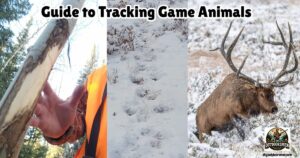
- DIY 4-Step Guide To Field Dressing And Quartering A Deer

- Night Vision Binoculars For Nocturnal Hunting
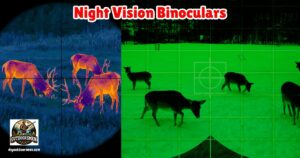
- The Science Behind Camouflage Patterns For Deer Hunting

- Binocular Accessories For Hunters

- 9 Tips for Using Trail Cameras To Track Deer Movements

As always, stay safe, enjoy the journey, and please try to leave it cleaner than you found it. If you have any comments, questions, ideas, or suggestions, please leave them in the comment section below, and I’ll get back to you ASAP. You can follow us on YouTube: Man Art Creations for videos of our DIY Adventures.
P.S. Thanks so much for checking out our blog; we really appreciate it. Just so you know, we may receive a commission if you click on some of the links that appear on our site. This helps us keep our content free and up-to-date for everyone. We appreciate your support!
